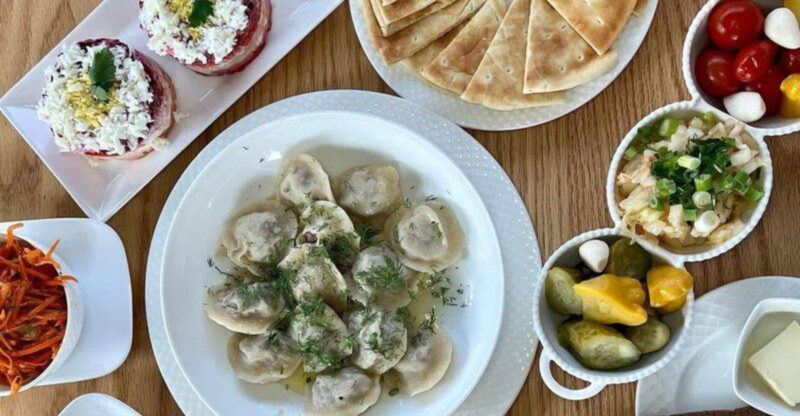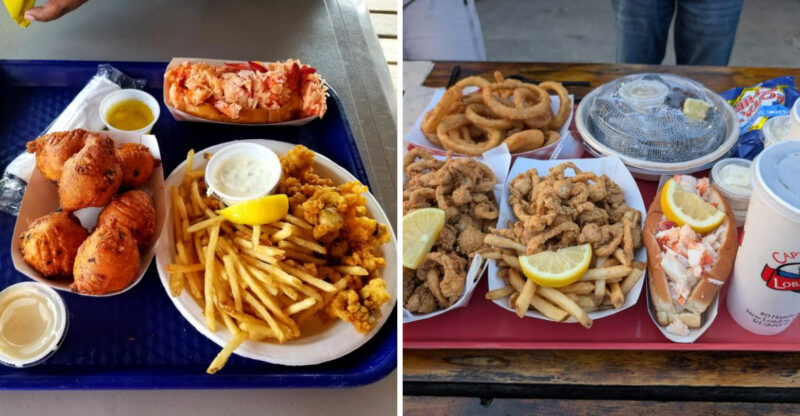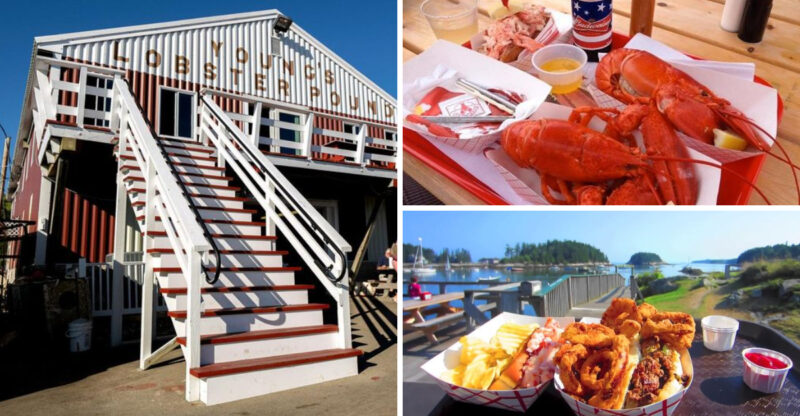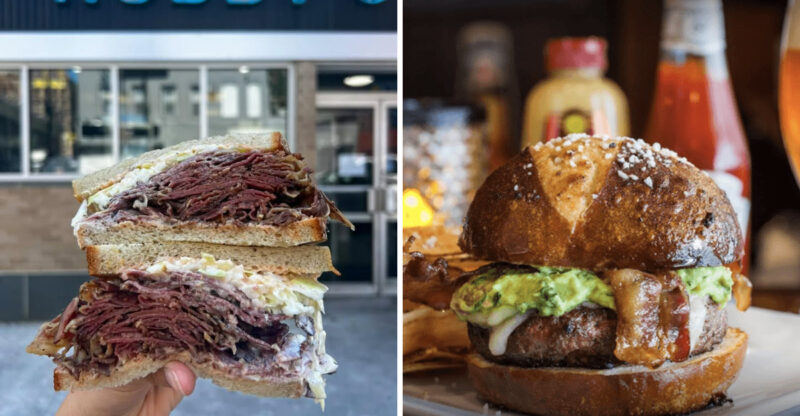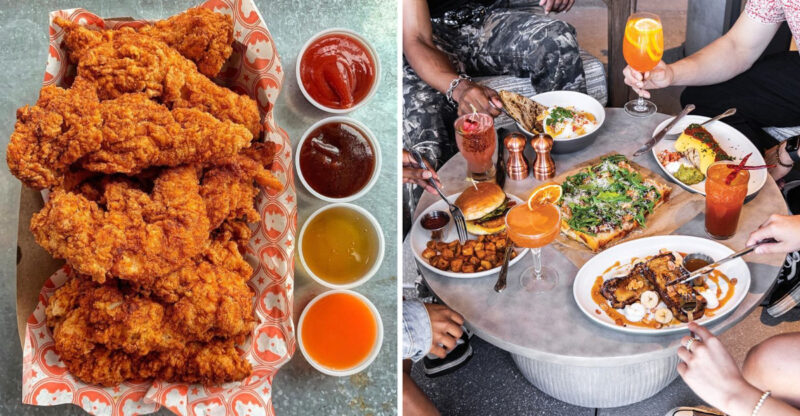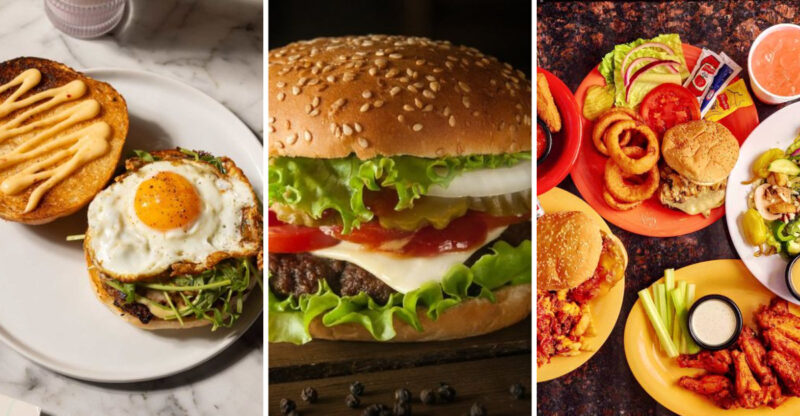Pennsylvania Foods Outsiders Struggle To Pronounce (Or Get All Wrong)
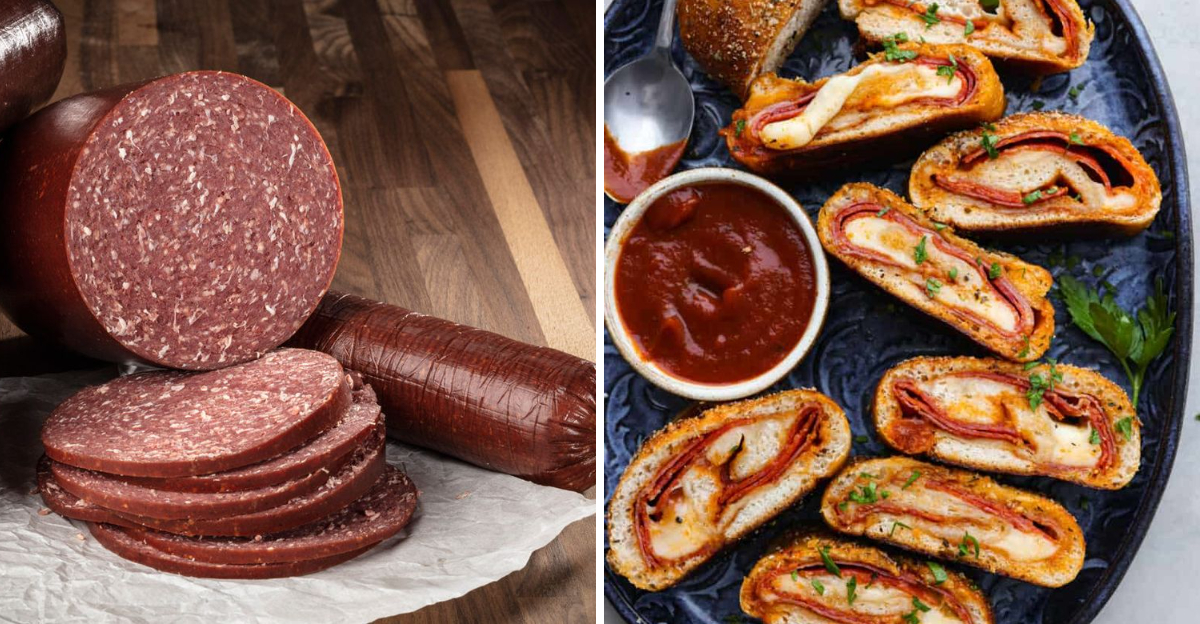
Pennsylvania has a food scene that’ll make your taste buds dance, but first, you’ve got to figure out how to say half of it. From molasses-filled pies to mystery meat breakfasts, the Keystone State serves up dishes with names that trip up even the most confident eaters.
Outsiders stumble over syllables, butcher pronunciations, and sometimes just make up entirely new words. Get ready to learn the real names behind Pennsylvania’s most mispronounced foods.
1. Shoofly Pie, Not Shufly Pie
This sticky, sweet creation confuses everyone who tries to spell it on their first attempt. Shoofly Pie is the real deal, a Pennsylvania Dutch masterpiece packed with molasses and topped with crumbly goodness.
People constantly drop that second ‘o’ like it’s optional. It’s not. The name supposedly comes from folks having to shoo flies away from the sugary filling.
One bite and you’ll understand why insects can’t resist. The gooey center contrasts perfectly with that crunchy top layer, creating a texture combo that’ll haunt your dreams in the best way possible.
2. Hoagie, Not Hoggie
Where do people get the extra ‘g’ from? Hoagie is spelled with one ‘g’ and pronounced HOH-gee, not like you’re talking about farm animals.
This sandwich royalty originated right here in Philadelphia during the 1920s. Some say it got its name from Hog Island, where shipyard workers devoured them during lunch breaks.
The proper hoagie comes loaded with Italian cold cuts, provolone, lettuce, tomatoes, onions, and a drizzle of oil. Calling it a sub or hero in Pennsylvania is basically asking for trouble from the locals who take their sandwiches seriously.
3. Chipped Ham, Not Chipped Spam
However you slice it, this isn’t Spam. Chipped Ham refers to ultra-thin sliced chopped ham that Pittsburgh locals pile onto sandwiches like their lives depend on it.
The confusion probably comes from both being processed meats, but chipped ham has a completely different texture and flavor profile. It’s delicate, almost shaved, and cooks up beautifully when you fry it.
Western Pennsylvania diners serve this stuff on everything from breakfast sandwiches to late-night snacks. The paper-thin slices get crispy edges when heated, creating little pockets of salty perfection that Spam could never replicate.
4. Scrapple, Not Grapple
Did you really just say grapple? Scrapple is the breakfast meat that makes squeamish eaters ask way too many questions about ingredients.
This Pennsylvania Dutch invention combines pork scraps, cornmeal, and spices into a loaf that gets sliced and fried until crispy. The name comes from scraps, not grapes or apples or whatever your brain invented.
Once you get past the whole “everything but the oink” concept, scrapple actually tastes incredible. That crispy exterior gives way to a soft, savory center that pairs perfectly with eggs and toast for a proper Pennsylvania breakfast.
5. Tastykake, Not Tasty Cake
Though it sounds like two words, Tastykake is definitely one. This Philadelphia bakery company has been cranking out individually wrapped snack cakes since 1914.
Outsiders constantly split it into two words when writing it down. The company trademarked it as one word, and locals will correct you faster than you can unwrap a Butterscotch Krimpet.
From Kandy Kakes to Krimpets to those perfect little fruit pies, Tastykake products are Pennsylvania childhood memories wrapped in cellophane. They’re sweeter, fresher, and way more nostalgic than any generic snack cake could ever hope to be.
6. Fried Chicken Sandwich (Pittsburgh-Style), Not Chicken Sandwich With Fries
When you order this in Pittsburgh, the fries come ON the sandwich, not beside it. Fried Chicken Sandwich Pittsburgh-style means crispy chicken, coleslaw, and a mountain of french fries all stuffed between two buns.
Tourists always mess this up by asking for fries on the side. That completely misses the point of this carb-loaded masterpiece.
The fries add texture, the slaw adds tang, and the chicken adds protein to justify eating what’s basically three meals in one. It sounds weird until you take that first bite and realize Pittsburgh knows exactly what it’s doing.
7. Perogies, Not Pirogues
Are you trying to order a boat? Perogies are those pillowy pockets of dough stuffed with potatoes, cheese, and sometimes sauerkraut that Pittsburgh absolutely worships.
The spelling trips people up constantly. It’s perogies with an ‘e’ and ‘g’, not pirogues which are actual canoes. Some spell it pierogies, which is also acceptable, but never pirogues.
These Eastern European dumplings found a permanent home in Pennsylvania thanks to the state’s Polish and Ukrainian communities. Boiled then fried with butter and onions, they’re comfort food that sticks to your ribs and makes you want to take a nap.
8. Peach Pie, Not Peach Cobbler
When Pennsylvania says peach pie, they mean actual pie with a top crust. Peach Pie is not cobbler, not crisp, and definitely not crumble.
Outsiders constantly confuse these desserts, but locals know the difference. Pie has a bottom crust and usually a lattice or full top crust. Cobbler has biscuit topping. They’re completely different animals.
Pennsylvania peach season produces some of the juiciest fruit on the East Coast. When you bake those beauties into a flaky double-crust pie, you get something way more elegant than cobbler. The fruit stays structured, the crust stays crispy, and summer tastes exactly right.
9. Lebanon Bologna, Not Lebanon Baloney
Though it sounds like baloney, Lebanon Bologna deserves the proper spelling. This sweet, smoky, semi-dry sausage comes from Lebanon County and tastes nothing like standard bologna.
The smoking process gives it a dark exterior and intensely flavorful interior. It’s tangy, slightly sweet, and has a firm texture that regular bologna can’t touch.
Locals eat it sliced thin on sandwiches or cut thick and fried with eggs. Calling it baloney is technically acceptable pronunciation-wise, but spelling it that way shows you’re not from around here. Pennsylvania Dutch butchers have been perfecting this recipe for generations.
10. Whoopie Pie, Not Whoopee Pie
Where did that extra ‘e’ come from? Whoopie Pie is spelled with just one ‘e’ in the middle, and it’s basically two soft chocolate cookies sandwiching a mountain of sweet cream filling.
Lancaster County claims to have invented these handheld desserts. The name supposedly comes from Amish children yelling “Whoopie!” when they found them in their lunch pails.
These aren’t cookies and they aren’t really pies either. They’re something gloriously in between, cakey and creamy and completely irresistible. Some bakeries make them the size of your face, which is exactly how big they should be for maximum enjoyment.
11. Stromboli, Not Stromboni
Are you ordering food or summoning an Italian magician? Stromboli is the correct name for this rolled-up pizza situation stuffed with meats, cheese, and sometimes vegetables.
Romano’s Italian Restaurant in Essington, Pennsylvania claims to have invented it in the 1950s. The name comes from the Italian island, not from adding random letters to make it sound more Italian.
Pizza dough gets rolled out, loaded with fillings, rolled up like a burrito, then baked until golden. It’s portable pizza perfection that you can slice and share, though honestly you probably won’t want to share it at all.
12. Fastnachts, Not Fastnacks
Though the spelling looks like a sneeze, Fastnachts are Pennsylvania Dutch donuts traditionally eaten on Shrove Tuesday. The name means “fast night” in German, referring to the night before Lent.
People butcher this pronunciation constantly. It’s FAHS-nockt, not fast-snacks or fast-nacks or whatever your mouth just attempted.
These aren’t fancy donuts with glazes and sprinkles. They’re simple, potato-based fried dough dusted with powdered sugar or served plain. Pennsylvania Dutch communities make them by the hundreds every year, and they disappear faster than you can correctly pronounce their name.
13. Haluski, Not Halushki
When you see this on a menu, Haluski is the spelling you’ll encounter most often in Pennsylvania. This simple dish combines fried cabbage and egg noodles with butter into something way more delicious than it has any right to be.
The spelling varies depending on which Eastern European grandmother you ask. Some add the extra ‘h’, but Pennsylvania Polish communities typically go with haluski.
It’s peasant food elevated to comfort food royalty. The cabbage caramelizes, the noodles soak up all that buttery goodness, and you end up with a side dish that outshines whatever main course it’s accompanying.
14. Primanti Sandwich, Not Primani Sandwich
Hence the name of the famous restaurant, Primanti Sandwich includes that ‘t’ in the middle. This Pittsburgh institution serves sandwiches with meat, cheese, coleslaw, tomatoes, and french fries all piled between two thick slices of Italian bread.
Tourists constantly drop that ‘t’ when trying to say it. The Primanti Brothers opened their original location in the Strip District in 1933, serving these massive sandwiches to truck drivers and shift workers.
Everything goes on the sandwich, including the fries and slaw. It’s messy, it’s huge, and it’s absolutely perfect after a long night. Don’t even think about asking for fries on the side.

